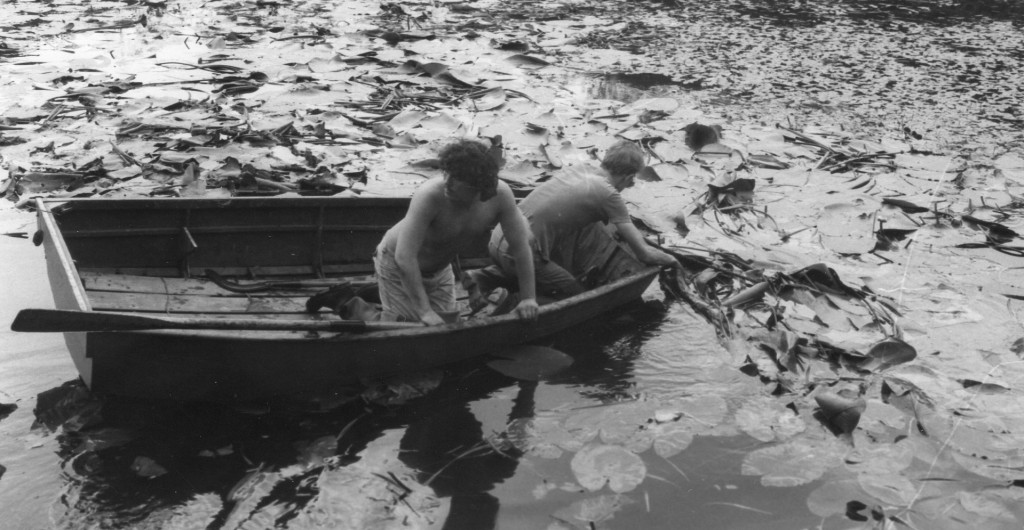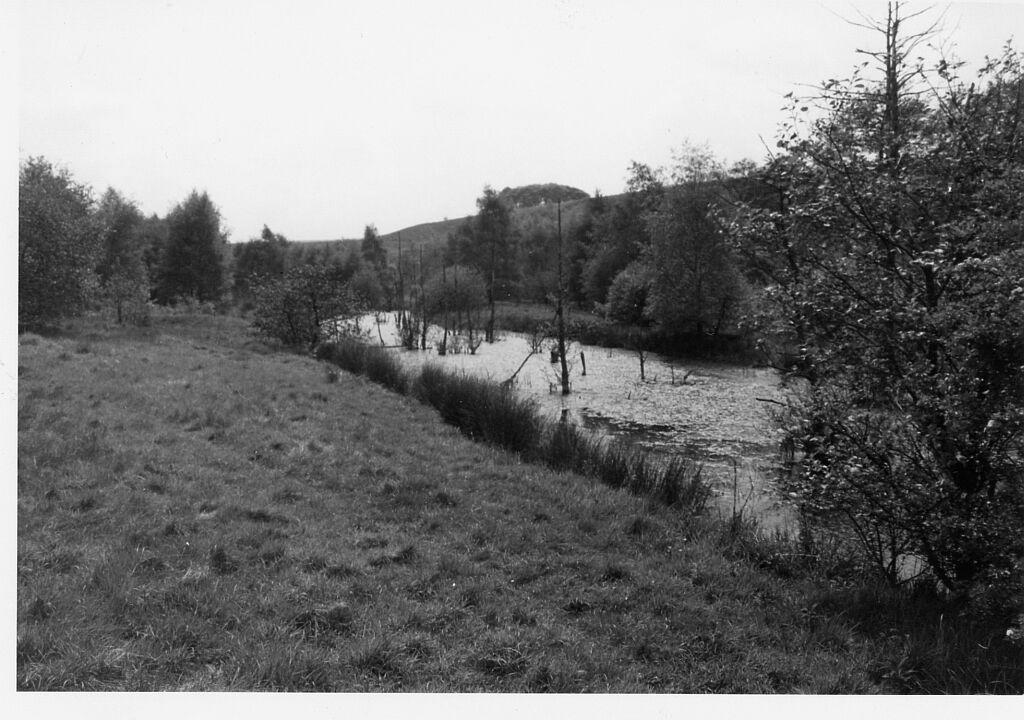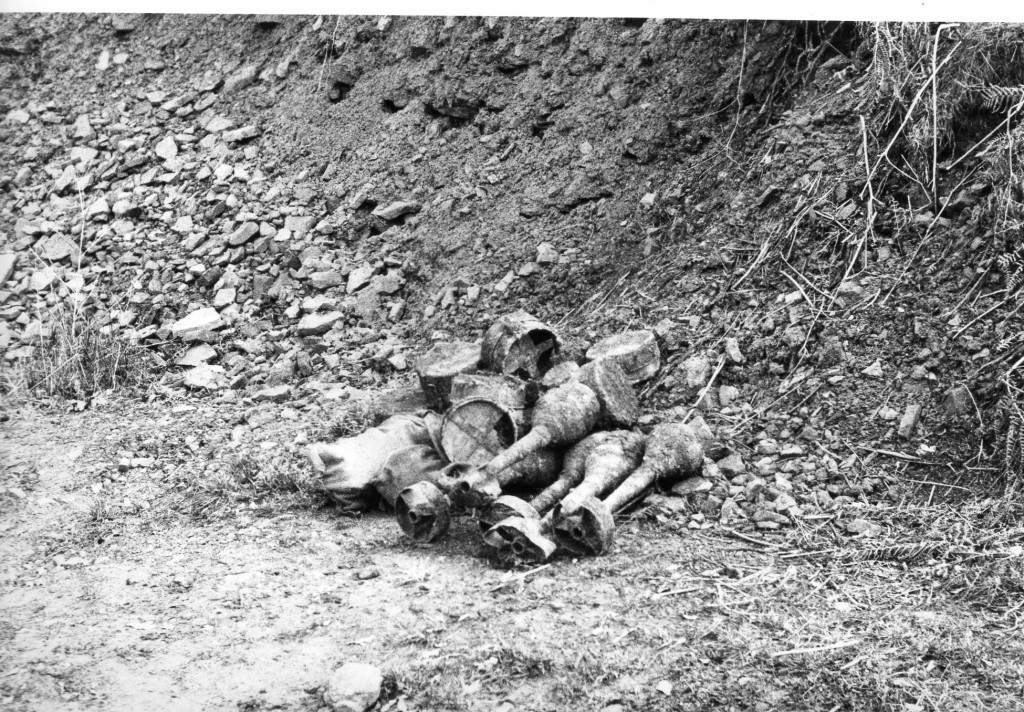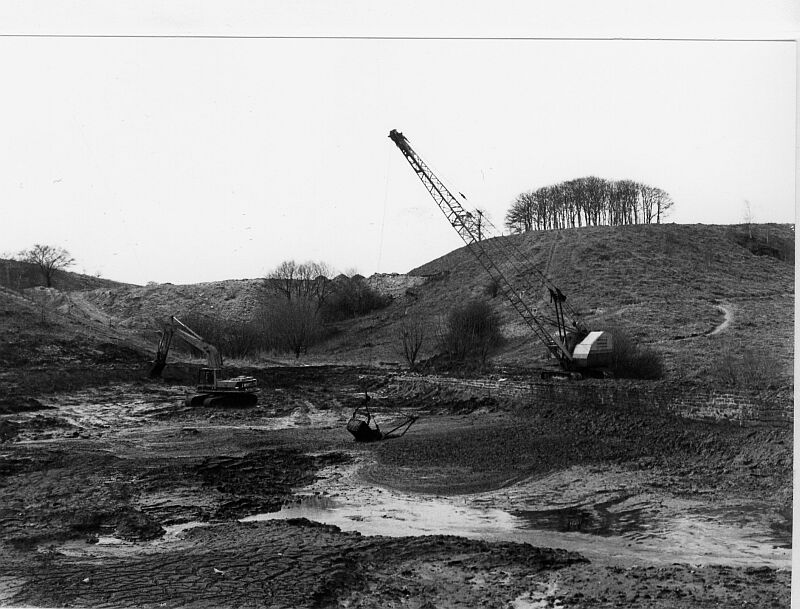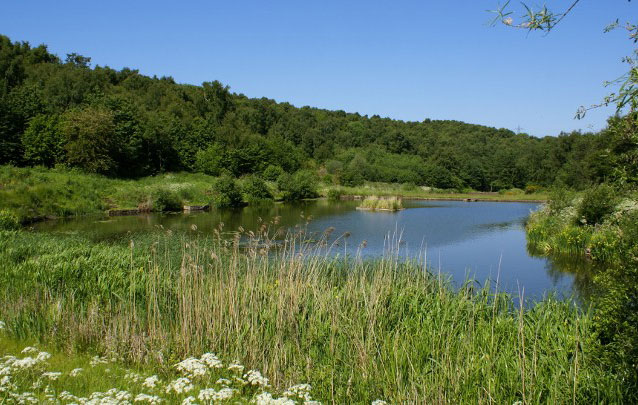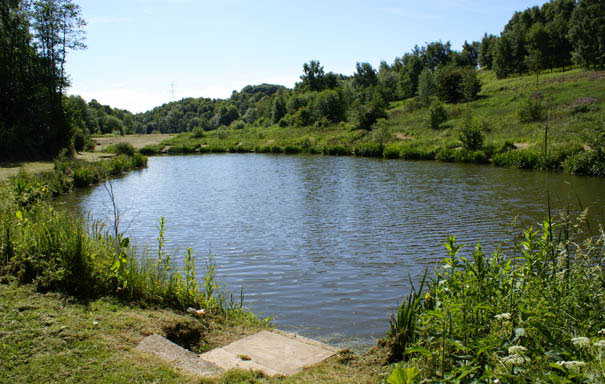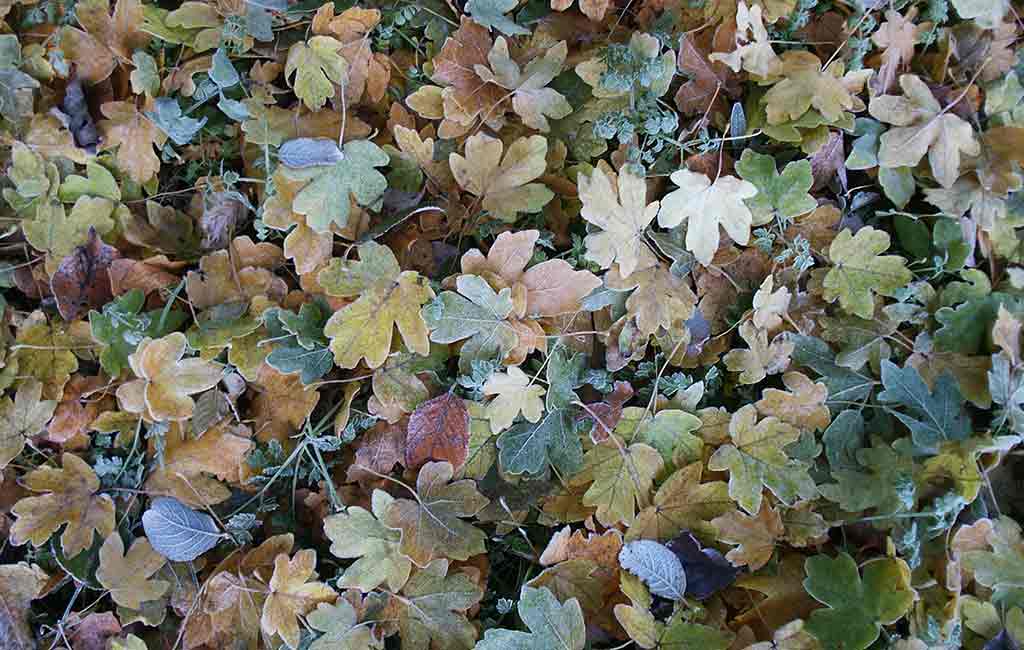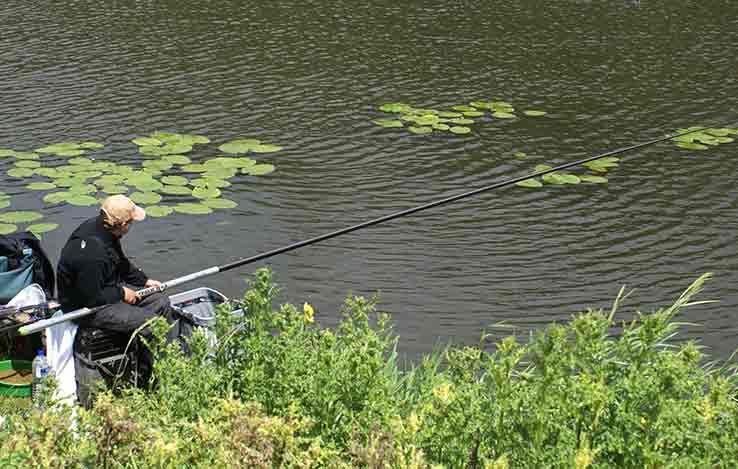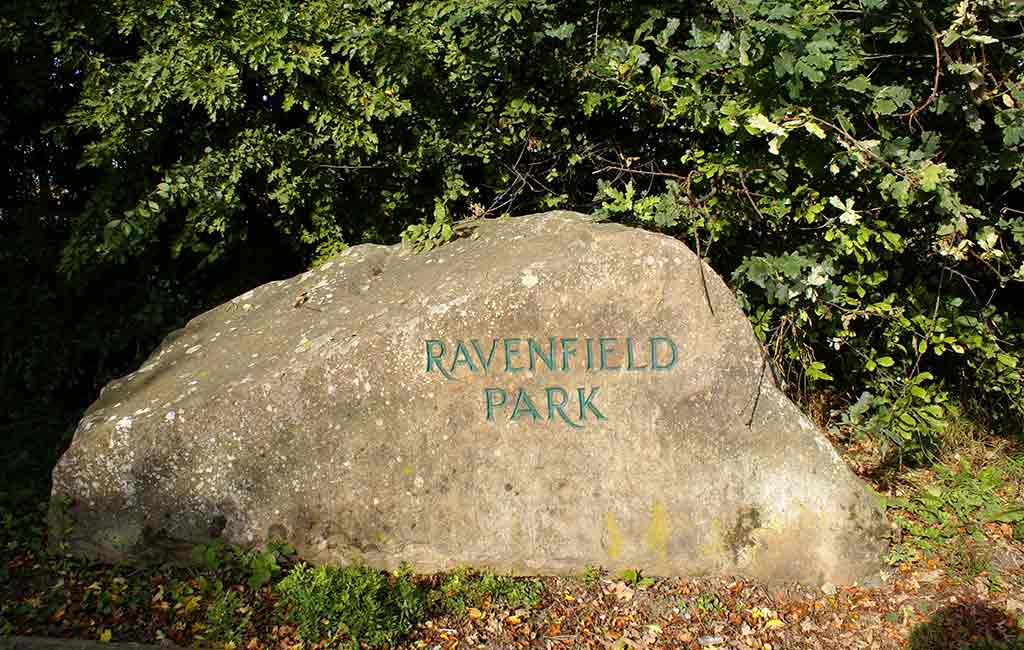The following is a brief summary.
It is likely that fish have been present at Ravenfield since the ponds were built. However there is little information about them until 1971 when a fisheries survey of the three original ponds noted that the ponds contained carp, tench, roach, perch, crucian carp and bream. At that time there were few trees in the area, which looked nothing like it does today.
When the Sports Club purchased the area in 1972, the fishery and area as a whole was in a poor condition. Only three ponds existed, and vandalism, motor cycling and poaching were rife. The three ponds were very shallow, weedy and access was limited. But worst of all, anglers had to walk from the top gate !! This situation continued until 1979/80 when a group of enthusiastic anglers, realising the Park’s potential, set about returning it to its former glory.
Accepting that vandalism and poaching must be controlled a programme of work was put in place to re-instate the Park’s boundaries, provide controlled access by way of a network of footpaths and to allow restricted public access to the Park. The former involved, over some years, rebuilding 1400yds of stone walls and planting and fencing 800yds of hedgerows, and the latter, the use of photographs in permits and vehicular access by key only.
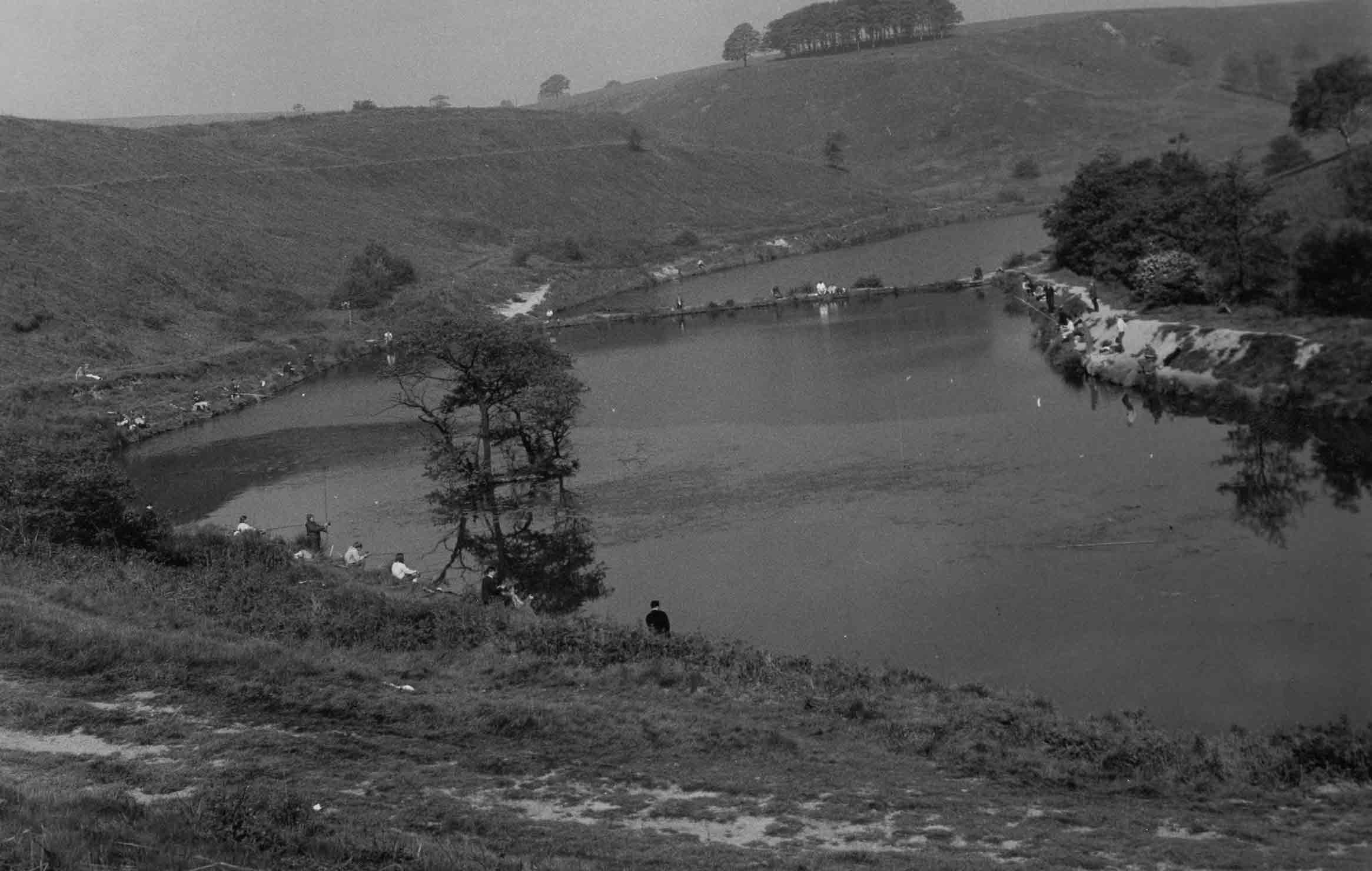
In terms of the ponds the following actions were carried out.
The New Pond was only three feet deep and the weed was so thick that fishing in mid-summer was impossible. As a result in 1981 the water was pumped out, the fish removed, and equipment brought in to clear the silt. Once regarded as an excellent tench pond, only one tench was found and of the 330lbs of fish removed, approximately 300lbs were carp. Some two years later with the depth increased, a monk sluice added to allow for future drainage, the pond was refilled and restocked with roach, bream, perch, rudd (from Bakers Pond), crucian carp and tench.
Yellow water lilies covered the Middle Pond to such an extent that in summer it was impossible to row a boat from one side to the other.
Initial work therefore centred on clearing the lilies, initially by cutting, but later by chemical control. And while the maximum depth was only five feet, the pond’s geography prevented a dredging operation similar to the New Pond. However because the small earthen dam was in danger of breaching, the pond was drained and a stone face and top installed. Again a monk sluice for future drainage was also incorporated.
Upon draining around 1200lbs of fish were removed, approximately half of which were carp, a situation which was to be seen again in the Great Pond and which was to result in this pond being established for carp only and the New and Great Ponds being reserved for silver fish only. This decision was based on the fact that both the bigger carp and the silver fish population would benefit if fish in the 6 to 10lbs category, and which were of little interest to carp or silver fish anglers, were removed. Also, establishing a single carp fishery would prevent ongoing arguments between anglers as to who fishes where, when and how. Accordingly, the pond was stocked with the 40 biggest fish and these have been supplemented with other fish as mortalities have arisen. In addition silver fish are regularly removed from this pond to promote carp growth.
One might imagine that the Great Pond would receive attention next but this wasn’t the case. At the northern end of the Park there existed a long narrow marshy area, with damaged stone structures at either end.
Historical investigation indicated that this area too had once been a pond, and therefore work was carried out to establish the possibility of restoration. It was during this early work, when machines had been brought on site to excavate, that operatives digging out what is now the overflow area, discovered a hand grenade. To everyone’s amazement the army reported that it was live and all work in the area was stopped. Subsequently thirteen Ukrainian bomb disposal experts, working for the Ministry of Defence, spent some months combing the whole area. Seventy six items including land mines, grenades and anti-personnel mines were found and they were exploded on the site in March 1984.
Given the all clear, machines were once again brought on site and the pond excavated as it is today. Named Burcliff Pond, the original stone structures had been reinstated, including the now compulsory monk sluice. Following refilling, the pond was restocked and used to house fish from the Great Pond as this, in turn, received attention.
In 1980 the Great Pond was nothing like the one we fish today. Its maximum depth was no more than four feet. More than half the area was covered in broad leafed pond weed and there was no access to the North Eastern bank at all. Combine this with the fact that the earthen dam was leaking badly and the pond was overrun by small perch and it was obvious that something needed to be done.
Work commenced in the winter of 1985 when the water was pumped out and the fish removed. Some 2150lbs of stock were removed including 1000lbs of stunted 5 to 9 lbs carp, which were sold. As the water level fell, two unknown features were discovered. The first, the remnants of an old stone island were rebuilt as we see them today. The second, a stone structure in the earth dam housed a huge wooden plug which, when removed, indicated the original depth of the water to have been almost eleven feet. While work was carried out to repair the leaks to the dam and to build a stone face and block top and back, the club considered de-silting. Funds were tight at the time but encouraged by the fact that a further £1000 was hastily raised with a raffle, the decision was made to bring machines on site to begin the work. Inside a month, and at some expense, huge quantities of silt were removed and depths increased to between four and eleven feet. In winter of 1986 the pond was restocked.
The area below the Great Pond had never been a pond until 1990, when the area was excavated and supporting walls, overflow and sluice built.
The Kingfisher Pond as it is now known was completed in 1992 and filled and stocked in 1993.
Work on the Bridge Pond was ongoing for many years. Again historical surveys indicated a pond of sorts many hundreds of years ago but in the 70’s and 80’s the area was totally overgrown with mature alder trees and all that remained was the stream running through the middle.
Initial investigations when Burcliff was built had shown the extent of the stone overflow, and old maps showed a waterfall where the bridge now is, but excavation proved difficult due to the very soft underlying silt and one operator almost lost a £40,000 machine which sank to the cab.
The pond was left to nature for some years, with only the odd angler fishing it. Perseverance however paid off, and the pond was finally completed in 2005.
Nature
The Park is an oasis of wildlife in a ‘desert’ of agriculture, which is best seen via one of the concessionary footpaths that have been established for visitors…
Fishery History
It is likely that fish have been present at Ravenfield since the ponds were built. However there is little information about them until 1971 when a fisheries survey of the three original ponds…
Site History
The area we now know as Ravenfield Park is a remnant of a deer park owned by the Westby family, known to be living in Ravenfield before 1200 AD. It remained with them until 1749, when it was sold to a Miss Elizabeth Parkin…

